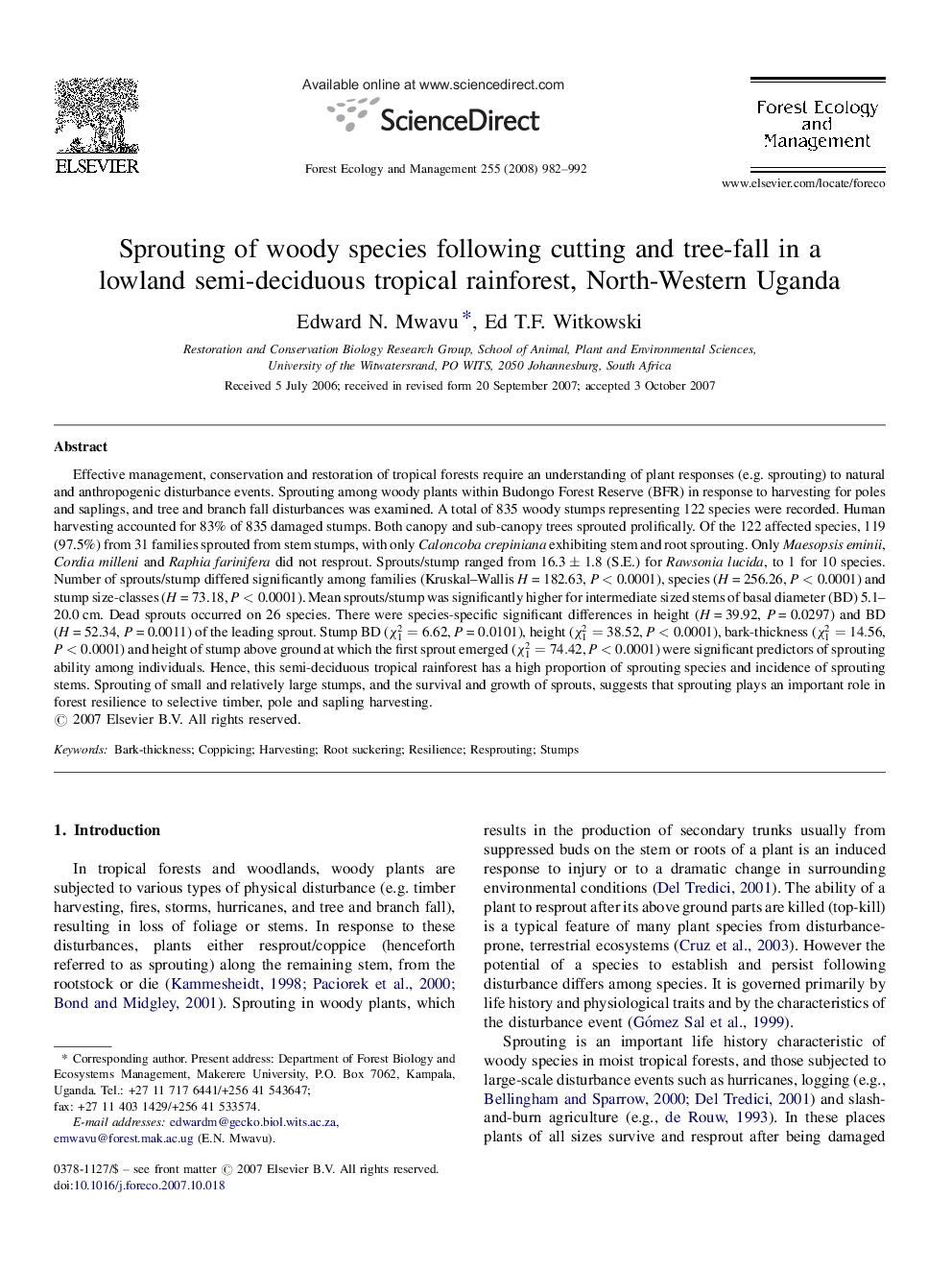| کد مقاله | کد نشریه | سال انتشار | مقاله انگلیسی | نسخه تمام متن |
|---|---|---|---|---|
| 89876 | 159358 | 2008 | 11 صفحه PDF | دانلود رایگان |

Effective management, conservation and restoration of tropical forests require an understanding of plant responses (e.g. sprouting) to natural and anthropogenic disturbance events. Sprouting among woody plants within Budongo Forest Reserve (BFR) in response to harvesting for poles and saplings, and tree and branch fall disturbances was examined. A total of 835 woody stumps representing 122 species were recorded. Human harvesting accounted for 83% of 835 damaged stumps. Both canopy and sub-canopy trees sprouted prolifically. Of the 122 affected species, 119 (97.5%) from 31 families sprouted from stem stumps, with only Caloncoba crepiniana exhibiting stem and root sprouting. Only Maesopsis eminii, Cordia milleni and Raphia farinifera did not resprout. Sprouts/stump ranged from 16.3 ± 1.8 (S.E.) for Rawsonia lucida, to 1 for 10 species. Number of sprouts/stump differed significantly among families (Kruskal–Wallis H = 182.63, P < 0.0001), species (H = 256.26, P < 0.0001) and stump size-classes (H = 73.18, P < 0.0001). Mean sprouts/stump was significantly higher for intermediate sized stems of basal diameter (BD) 5.1–20.0 cm. Dead sprouts occurred on 26 species. There were species-specific significant differences in height (H = 39.92, P = 0.0297) and BD (H = 52.34, P = 0.0011) of the leading sprout. Stump BD (χ12=6.62, P = 0.0101), height (χ12=38.52, P < 0.0001), bark-thickness (χ12=14.56, P < 0.0001) and height of stump above ground at which the first sprout emerged (χ12=74.42, P < 0.0001) were significant predictors of sprouting ability among individuals. Hence, this semi-deciduous tropical rainforest has a high proportion of sprouting species and incidence of sprouting stems. Sprouting of small and relatively large stumps, and the survival and growth of sprouts, suggests that sprouting plays an important role in forest resilience to selective timber, pole and sapling harvesting.
Journal: Forest Ecology and Management - Volume 255, Issues 3–4, 20 March 2008, Pages 982–992